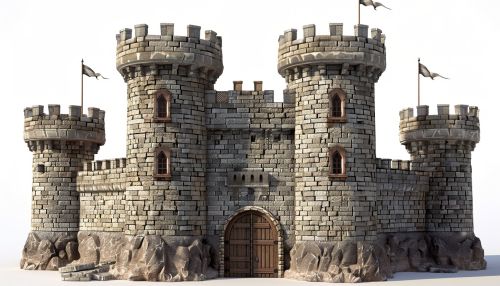High Middle Ages
Introduction
The High Middle Ages, a period in European history spanning from the 11th to the 13th century, was a time of significant social, political, and cultural transformation. This era was characterized by the rise of nation-states, the expansion of trade and commerce, and the flourishing of art and literature. The High Middle Ages also saw the spread of Christianity and the establishment of powerful religious institutions.
Social and Political Developments
During the High Middle Ages, the feudal system was the dominant social and political structure. This system was characterized by a hierarchy of relationships and obligations between lords and vassals, with the King at the top. The King granted lands, known as fiefs, to his vassals in exchange for their loyalty and military service. This system provided stability and order in a time of frequent warfare and political uncertainty.
The High Middle Ages also saw the rise of nation-states, particularly in England and France. The Magna Carta, signed in 1215, marked a significant shift in political power from the King to the nobility in England. In France, the Capetian dynasty consolidated power and expanded their territory, laying the foundation for the modern French state.


Economic Expansion
The High Middle Ages was a period of significant economic expansion, driven by the growth of trade and commerce. The revival of long-distance trade led to the development of major trade routes, such as the Silk Road and the Hanseatic League. These trade networks facilitated the exchange of goods, ideas, and culture between different regions.
The growth of trade also led to the rise of towns and cities, which became centers of commerce and industry. The emergence of a merchant class, independent from the feudal system, contributed to the development of a market economy.
Religious Institutions and Movements
The High Middle Ages was a time of religious fervor and the establishment of powerful religious institutions. The Catholic Church played a central role in society, influencing all aspects of life from politics to education.
This period also saw the launch of the Crusades, a series of religious wars sanctioned by the Church to reclaim the Holy Land from Muslim rule. These campaigns had profound social, political, and cultural impacts, shaping the course of European history.
The High Middle Ages also witnessed the rise of monastic orders, such as the Cistercians and the Dominicans. These orders played a crucial role in the religious and intellectual life of the time, contributing to the preservation and dissemination of knowledge.
Cultural and Intellectual Developments
The High Middle Ages was a period of cultural and intellectual flourishing, often referred to as the "Twelfth Century Renaissance". This era saw the emergence of universities, the development of scholasticism, and the production of significant works of literature and art.
Universities, such as the University of Paris and the University of Bologna, became centers of learning and intellectual exchange. Scholasticism, a method of critical thought that combined Christian theology with classical philosophy, dominated intellectual life.
In literature, the High Middle Ages saw the creation of epic poems, such as the Song of Roland and the Divine Comedy by Dante Alighieri. In art, the Gothic style emerged, characterized by its emphasis on light and height, as exemplified in the architecture of cathedrals like Notre-Dame de Paris.
